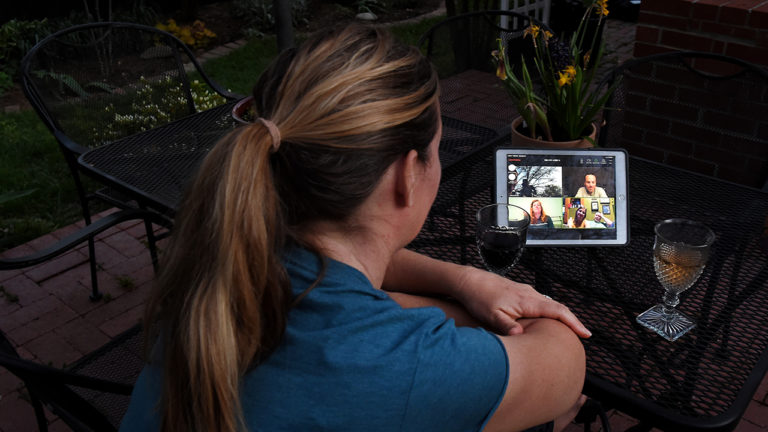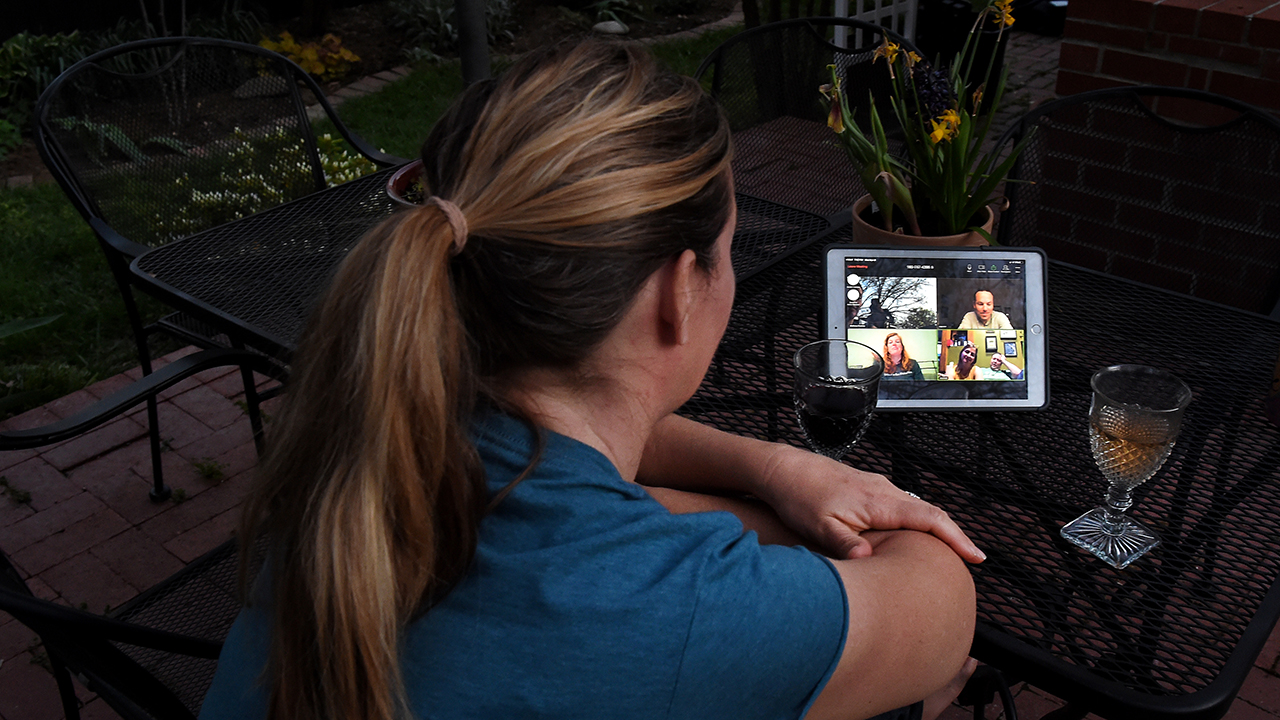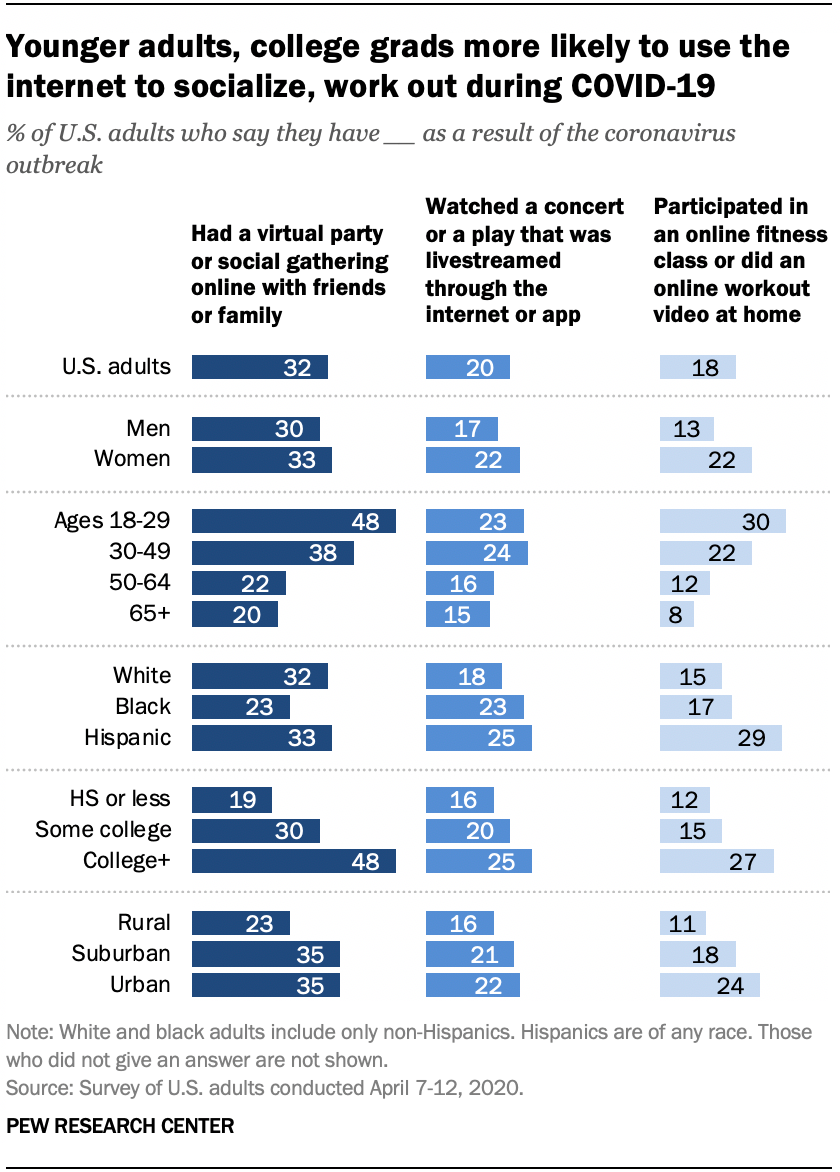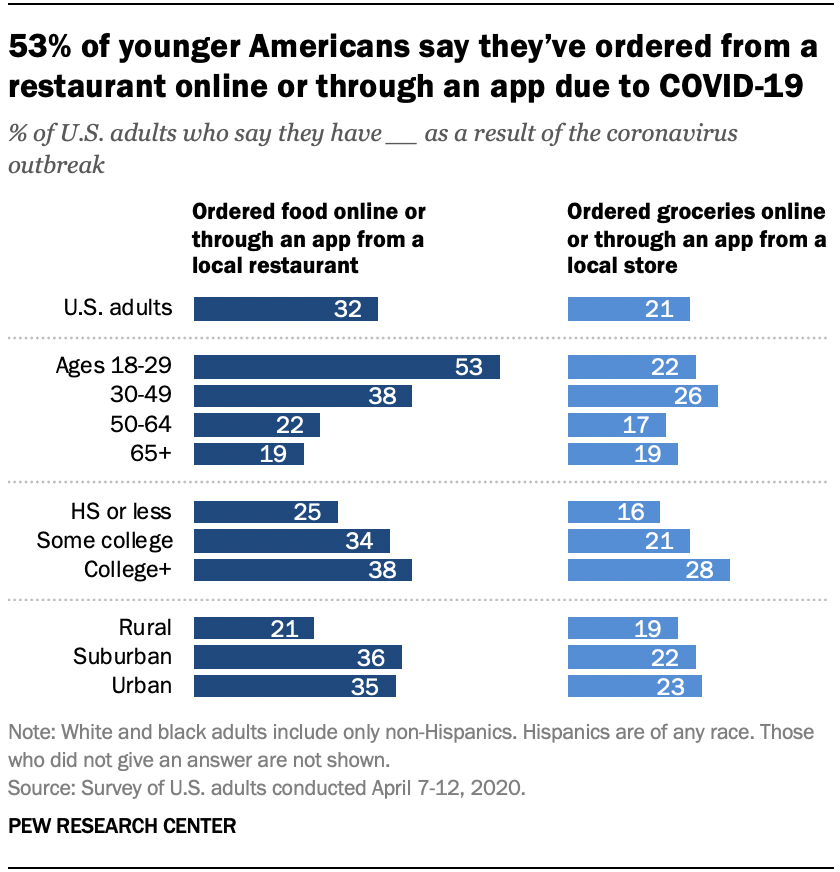

The internet and smartphones have long been embedded in Americans’ lives. But as the COVID-19 outbreak has led government officials to close nonessential businesses and schools and issue stay-at-home orders, many aspects of everyday life have migrated online.
Some Americans – particularly those who are younger or college educated – are finding virtual ways to connect, shop and be active during this time, according to a Pew Research Center survey that asked U.S. adults in early April about six types of online and mobile activities they may be engaging in due to the outbreak.
 Roughly a third of Americans (32%) say they have had a virtual party or social gathering with friends or family, according to the April 7-12 survey. (Survey questions were posed to internet users on the Center’s American Trends Panel. Throughout this analysis, findings are reported as shares of the adult population.)
Roughly a third of Americans (32%) say they have had a virtual party or social gathering with friends or family, according to the April 7-12 survey. (Survey questions were posed to internet users on the Center’s American Trends Panel. Throughout this analysis, findings are reported as shares of the adult population.)
Besides turning to digital means to socialize, one-in-five Americans say they have watched a concert or a play that was livestreamed through the internet or an app. And with fitness centers, gyms and even some public parks closed, 18% of Americans say they have participated in an online fitness class or done an online workout video at home.
In addition, 17% of adults say they have attended a class online for school as a result of the coronavirus outbreak. Most postsecondary schools throughout the United States have shut down their campuses and shifted to online classes.
Pew Research Center conducted this study to understand how Americans are responding to the new coronavirus outbreak. This analysis focuses in particular on the role digital technology plays in people’s day-to-day lives during the outbreak. For this analysis, we surveyed 4,917 U.S. adults from April 7 to 12, 2020. Everyone who took part is a member of Pew Research Center’s American Trends Panel (ATP), an online survey panel that is recruited through national, random sampling of residential addresses (see our Methods 101 explainer on random sampling). This way nearly all U.S. adults have a chance of selection. The survey is weighted to be representative of the U.S. adult population by gender, race, ethnicity, partisan affiliation, education and other categories. Read more about the ATP’s methodology.
Here are the questions used for this report, along with responses, and its methodology.
Differences by age and education
Young adults are particularly likely to have participated in these activities. Roughly half of adults ages 18 to 29 (48%) say they have had a virtual party or gathering because of COVID-19, compared with 38% of those ages 30 to 49 and 21% of those 50 and older.
Age differences regarding livestreaming a concert or play or doing virtual workouts are more modest. Still, adults under the age of 50 are more likely than those ages 50 and older to say they have livestreamed a concert or play (24% vs. 16%) or exercised via an online fitness class or video (25% vs. 10%).
There are also educational differences across each of these actions. The largest gap relates to online socializing. Roughly half of Americans with a bachelor’s or advanced degree (48%) say the outbreak has led them to get together with friends or family remotely, compared with 30% of those with some college experience and just 19% of those with a high school education or less. These experiences also differ by community type, with rural Americans less likely than those living in urban or suburban areas to report taking part in these web or mobile-based actions because of COVID-19.
While similar shares of men and women say they’ve had a virtual gathering as a result of the outbreak, women are more likely than men to say they have participated in an online fitness class or done an online workout video at home (22% vs. 13%) or have livestreamed a concert or play (22% vs. 17%).
Some turn to internet and apps to order groceries and meals
Many restaurants around the country have been forced to close dine-in service in favor of delivery or takeout options during the coronavirus outbreak.
In the Center’s survey conducted earlier this month, about a third of adults (32%) say they have ordered food online or through an app from a local restaurant due to COVID-19, but there are substantial differences by age, educational attainment and community type.
 While 53% of 18- to 29-year-olds say they have ordered from a local restaurant this way, the share is 38% among those ages 30 to 49 and 20% among those 50 and older.
While 53% of 18- to 29-year-olds say they have ordered from a local restaurant this way, the share is 38% among those ages 30 to 49 and 20% among those 50 and older.
Roughly a third of Americans living in urban (35%) and suburban (36%) areas say they have ordered from a local restaurant online or through an app because of the outbreak, compared with 21% of those living in rural areas. In addition, college graduates are more likely than those with some college experience or those who have a high school education or less to say they have ordered food online or through an app from a local restaurant.
When it comes to other food needs, 21% of Americans say they have ordered groceries online or through an app because of the coronavirus outbreak. Compared with ordering from local restaurants, the demographic differences on this question are far more modest.
College graduates (28%) are more likely than those with some college (21%) or a high school education or less (16%) to report that they have ordered groceries online. Similarly, about a quarter (26%) of Americans ages 30 to 49 say that they have ordered groceries online or through an app from a local store as a result of the coronavirus outbreak, while only 18% of those 50 and older say the same. (Adults ages 18 to 29 do not significantly differ from older groups.)
Note: Here are the questions used for this report, along with responses, and its methodology.